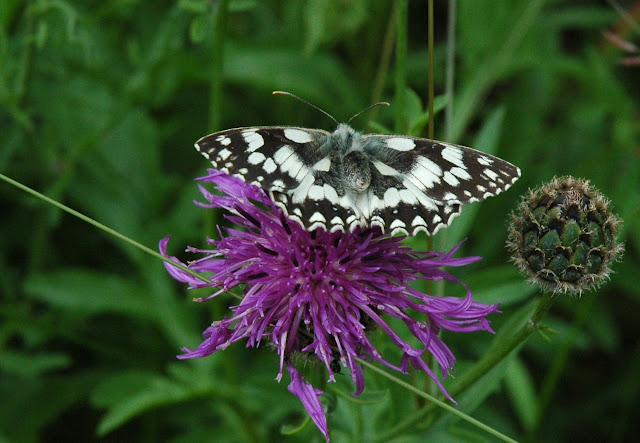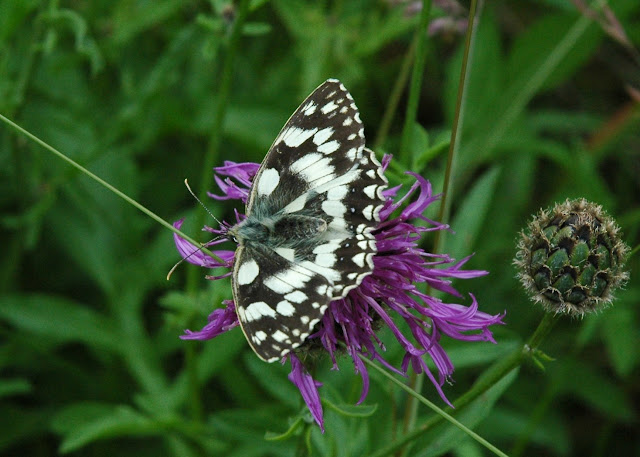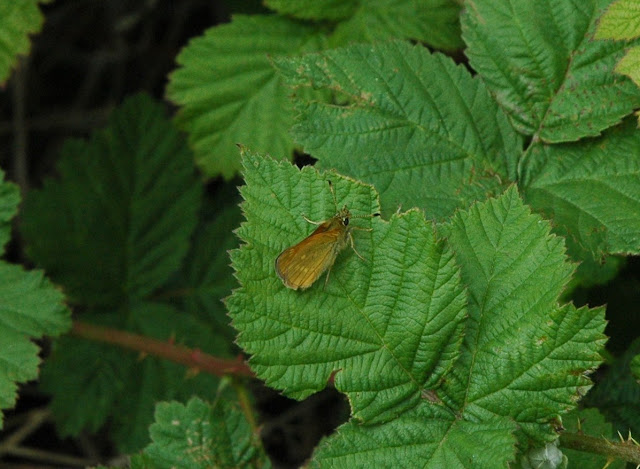I'm glad it wasn't Sunday
'Cause that's not WTRobin-day
My I had to runday
It's just another manic Monday!
Note: please watch my videos in HD. If you are unsure how to do this then please CLICK HERE. Also images can be enlarged by just clicking on them.
I had planned to go with a friend of mine over to Cumbria to look at the rare Marsh Fritillary butterfly. I parked my car on my mates drive around about 08.35 and got out the car. "I take it you've heard?", I asked my mate. Seeing if he had read his pager about news of a
Red-flanked Bluetail at Hartlepool Headland. He said he hadn't; checked his pager and I made a joke that whenever I seem to leave the county something good turns up! I said I would go and see it when I got back from the day out as it was 'only' (forgive me) a
Red-flanked Bluetail, I had never seen one in Durham so I was keen anyway. We were in the car a whole of 5 minutes when my phone rang and the name appeared "
Tristan Reid";
Tristan: "Your not in Cumbria yet are you?."
Me: "Hi Tristan, yeah I know about the Red-flanked Bluetail."
Tristan: "Its just been Mega'd as
White-throated Robin."
Me: "Are you joking?"
Tristan: "No!"
Me (to mate who was driving): "HEAD FOR HARTLEPOOL! Its been Mega's as White-throated Robin. Thanks Tristan we are on our way!"
Mate: (reads pager message + expletives)
So after my mate panicked having read the pager message and grabbed his pager, the gear stick, and steering wheel at the same time we headed for Hartlepool. When we arrived it had been released and we were amongst the first 50 or so birdwatchers on site. I was in a bit of a panic knowing they can be elusive birds, I needn't of panicked as it was showing well hopping around the hedges that go around the bowling green. Wow! Just seen a
White-throated Robin in the UK! Another species I had never really given much thought to as having a chance to see in the UK let alone in my own county of Durham.
When I first clapped eyes on the bird and started studying it I could see quite easily why the mis-ID was initially made. The bird from a distance looked just like a
Red-flanked Bluetail, however closer study reveals the following separating it from
Red-flanked Bluetail:
- Fairly long bill, looking more powerful than that of
Red-flanked Bluetail.
- All dark black tail, this feature showed well a couple of times when it turned around and was noticeable more so in flight.
- Finally the size was noticeable; not as small and dainty looking as a
Red-flanked Bluetail. Built more like a mini thrush.
(White-throated Robin - Andrew Kinghorn)
(White-throated Robin - Andrew Kinghorn)
(White-throated Robin - Andrew Kinghorn)
More videos and images can be seen
HERE.
After watching the bird for a couple of hours and catching up some some mates we decided we would leave the bird to it as well as leave the twitchers to it. It had flown from where we had originally seen it and was becoming a little elusive as the crowds started to arrive. From here we headed to Seaton Carew where news had broke of a male Red-backed Shrike. Now they are also a stunning looking bird! So we headed along and parked beside the sewage works and walked south to the place where it was. We had stunning views of the bird as it showed really well for us.
(Red-backed Shrike - Andrew Kinghorn)
(Red-backed Shrike - Andrew Kinghorn)
(Red-backed Shrike - Andrew Kinghorn)
(Red-backed Shrike - Andrew Kinghorn)
(Red-backed Shrike - Andrew Kinghorn)
As we had planned to spend the day in Cumbria with butterflies and it was a nice day in Durham it would be rude not to go and look for some locally! So we headed off to Cowpen Bewley Woodland Park which is now semi-famous for its Ring-necked Duck over the past 2 years as well as Nightingale this year. We had a few butterflies on our walk around and here are some pictures of what we saw below:
(Common Blue - Andrew Kinghorn)
(Common Blue - Andrew Kinghorn)
(Durham Brown Argus- Andrew Kinghorn)
(Large Skipper - Andrew Kinghorn)
(Large Skipper - Andrew Kinghorn)
(Meadow Brown - Andrew Kinghorn)
(Small Heath - Andrew Kinghorn)

(Speckled Wood - Andrew Kinghorn)
(Speckled Wood - Andrew Kinghorn)
We also had a Small Tortoiseshell butterfly but I was unable to photograph that, it was very fresh and no doubt just came out. Small Tortoiseshell and Meadow Brown were lifer butterflies for me; I am new to butterflies just this year so that's understandable.
A brilliant day, a one to remember for a long time yet.
Until next time, Foghorn out!


























































